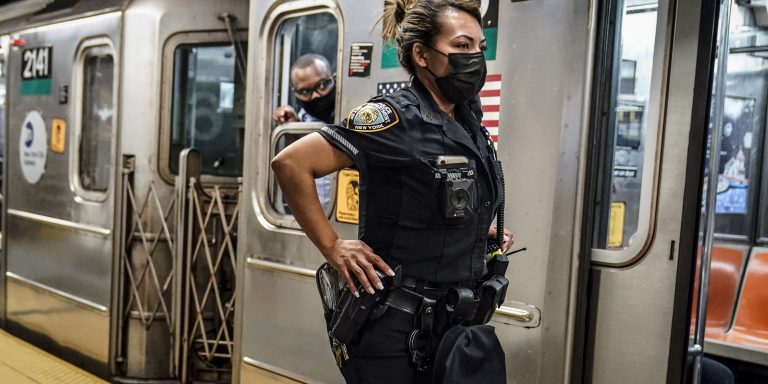INTELBRIEF
November 18, 2022
IntelBrief: Fear and Loathing: Crime and Crime Coverage in the United States

Bottom Line Up Front
- Concerns over crime, both real and manufactured, were believed to have played a role in recent U.S. midterm elections.
- Media coverage of crime, a perennial campaign issue, spiked in the months leading up to the midterm elections.
- The new FBI reporting format for maintaining U.S. violent crime statistics has become even more complicated.
- Gun crime in the U.S. remains the greatest challenge to maintaining public safety, even as gun culture, the gun lobby, and some politicians work to prevent gun control measures.
Leading up to the recent midterm elections, campaign ads flooded American televisions, radios, and websites warning of apocalyptic crime, especially in urban areas and densely populated cities. The ads were ominous and fearmongering, warning that political opponents were allowing or encouraging violent crime. Such scare tactics are a perennial and often effective election tactic. This year’s crime coverage in the months leading up to the U.S. midterm elections (the federal, state, and local elections that fall between the four-year presidential election cycle) was notably hyperbolic. Crime remains a partisan wedge issue and, subsequently, remains under-addressed in any meaningful way nationally. Since crime is an intensely local issue driven by local circumstances—many of the solutions are also local. Yet, the federal government has played a significant role in funding local efforts as well as setting priorities and encouraging best practices in a top-down manner.
For all the political campaign ads about crime-driven societal collapse, most violent crime categories show no significant increase over the last several years, with two large caveats. The first is that murder, the rarest but most serious of violent crimes, showed a historic year-over-year increase from 2019 to 2020. Second, it is almost impossible to make accurate statements about national U.S. crime trends due the Federal Bureau of Investigation’s (FBI) reliance on the voluntary submission of data by local police departments. Historically, FBI reporting has provided the most comprehensive snapshot of crimes in the U.S. Still, the vast differences in how local departments classify crimes, assuming they send them to the FBI at all, creates inconsistent metrics and, ultimately, problems for understanding national violent crime trends. Moreover, due to a new FBI reporting system and, subsequently, historically low participation of local law enforcement – only 63 percent of law enforcement agencies have submitted data – recent statistics for 2021 are acutely incomplete. Reliable government data on crime trends in 2021 may never be available for some states and large metropolitan cities, such as the New York City Police Department (NYPD) and the Los Angeles Police Department (LAPD) who have yet to submit data for 2021. The low overall participation among law enforcement, as well as the omittance of data from two of the largest police departments in the country, creates major challenges for understanding current national crime trends. Officials hope the new reporting requirements, which disaggregates the data into more detail about the crimes committed, will attenuate some of these obstacles as more departments shift to the new FBI reporting format. However, since the submission of data requires more detail and is voluntary, challenges remain to incentivizing participation and, ultimately, providing accurate national statistics which is essential for setting policy, allocating police funding, and informing the public.
The scattershot, ad hoc, and incomplete nature of U.S. crime statistics are partly a result of the inherently local nature of crime: police departments vary greatly in size (though most are under 100 officers) with wildly different capabilities, concerns, and priorities. Crime statistics, except murder and aggravated assault/shootings, are also notoriously vulnerable to manipulation: for example, downgrading felonies to misdemeanors or inflating misdemeanors to felonies. Crime is an immediate and tactile concern for residents, with violent crime often begetting cyclical, long-lasting crime not just among the victims and families but also entire communities. Because crime is such a powerful negative in people’s lives, the fear of crime is a powerful negative campaign issue. It doesn’t matter if crime rates, however imperfect, show that most crimes haven’t increased if people’s perception of crime has. Too often, politicians on one side harangue the other about failures to control crime, without proposing common sense legislation of their own. In the recent midterm elections, Democrats were continuously assailed for failing to address the issue with voters transparently, accused of ignoring the issue of urban crime or enacting policies that may exacerbate it in cities such as New York, San Francisco, and Chicago.
Even with incomplete statistics, the rate of gun crime (ranging from murder and aggravated assault to felons in possession of guns and robberies) in the United States dwarfs most other countries, particularly European democracies with whom the U.S. is compared economically and politically. There are more guns than people in the United States and yet it is still common for politicians and their supporters to insist that the proliferation of guns in America has nothing to do with gun crime. There is no reasonable expectation this dynamic will change any time in the foreseeable future, given the divisions over even basic common-sense gun regulations (such as universal background checks for all gun sales and more regulation on online gun sales, and looking at the issue of carrying guns in all public places). Guns are everywhere in the U.S. and increasingly are in the hands of violent offenders. The persistent challenge of high-powered, high-capacity firearms in the hands of criminal offenders, often young offenders burdened with the poor judgment and impulse control of a teenager, is not being addressed. Due to this reality, the consequences of this national neglect are instead borne every day by police officers, emergency medical services, hospitals, schoolteachers, and, most poignantly, the grieving relatives of those killed by guns.